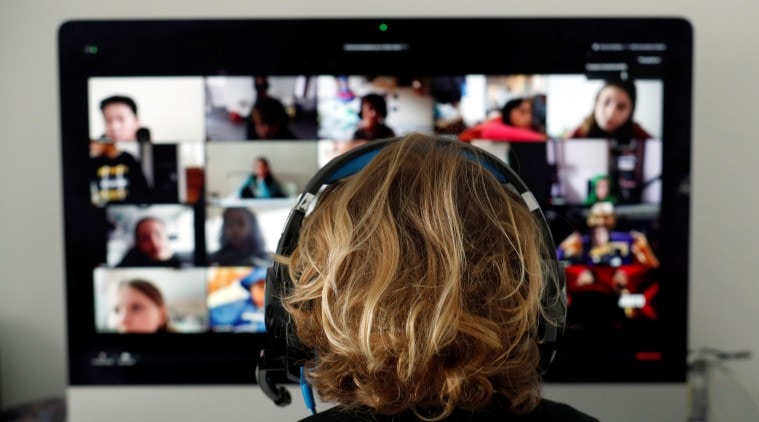 Online classes: Why teaching, and learning, remotely is a learning experience for all (Photo source: Getty)
Online classes: Why teaching, and learning, remotely is a learning experience for all (Photo source: Getty)
One of the biggest casualties of the Covid-19 pandemic and the resultant lockdown has been institutionalised education. Schools have been shut to prevent the spread of the virus and this has given way to online classrooms, a very new concept in India even for the most sophisticated schools. It is commendable how easily some educational institutions have moved to virtual classrooms, all thanks to tools such as Zoom, Google Hangouts and Microsoft Teams. But there are some still struggling to get online.
There are teachers and schools putting extra effort to engage students in classes by revamping timetables, shifting discussions online, taking feedback from parents and monitoring students constantly. While there are some who are doing the bare minimum and using WhatsApp to stay connected with students. Some schools are trying out tools like SeeSaw, Google Suite and YouTube videos to make online classes as engaging as offline ones. But there are also those that are failing miserably at this shift.
Parents are divided
Vikas Garg, a professional in the energy sector and a parent of a preschooler, living in Gurugram says, “Online class is a fairly new concept and my daughter was pretty excited initially to be part of it. The virtual classes via Zoom are being conducted smoothly. There are some drawbacks such as the lack of a platform to submit assignments. Students are required to write the assignments, take a picture of it and email, which gets tough for the child as well as the teacher. Otherwise, the school has moved into online teaching very smoothly.”
Barna Chowdhury, a banker and mother of an 8-year-old living in Jharkhand, has a very different story to share. “The concept of online class is rubbish,” she is categorical. “The schools in Telco area are one of the best in the state and they are failing miserably at this. The teachers send photos, often unclear ones, of notes in a WhatsApp group and expect the parents to note then down on behalf of the children. In today’s time, when both parents are working, it is difficult to do the tasks given by the schools,” she explains, adding how the school has shown no initiative to connect with the child. “My daughter isn’t learning anything.”
Chanchal Roy, a Kolkata businessman, too has similar frustrations about the classes of his two sons. “Class teachers send assignments every day, we need to take printouts, finish them and send a photo of the assignment to the teachers via WhatsApp. I feel the school is just rushing to finish the syllabus and this isn’t helping the child in any way.”
 It is commendable how easily some educational institutions have moved to virtual classrooms (Image: Getty)
It is commendable how easily some educational institutions have moved to virtual classrooms (Image: Getty)
The right platform
Schools (some) are using video conferencing platforms like Zoom and Google Hangouts to conduct classes. Some others have moved classes to Microsoft Teams. Many teachers find these tools extremely helpful to make classes even more engaging than regular classroom while others are struggling.
“Considering that theirs is a generation heavily dependent on gadgets, getting them to use the devices is not an issue. Getting them to use it judiciously and in a manner that doesn’t drain them completely, requires a lot of planning and monitoring both by parents and teachers,” says Iewa Shukla, an English teacher at a reputed school in New Delhi.
Aarti Sarin, another English teacher of a Delhi school, feels virtual classes can never be her “cup of tea” because a lot goes into making them productive and interactive. “It’s easy to know and understand a student’s response in a physical classroom, but in Zoom classes there are a lot of drawbacks apart from the simple ones of being devoid of experiencing those “wow” moments in the class.” She explains: “I am trying to create an interactive environment in the online classes by randomly asking questions to students by taking their names as mentioned in chat. Most of them do answer but there are few who do not even respond.”
“Teaching students using Zoom is different, not difficult, in the sense that you miss the physical presence of the students in the class,” says another teacher from Delhi. She thinks the process is easy as the job roles largely remain the same and no such extra efforts are required. “Zoom schedules help manage everything and most classes seem to run as per a timetable usually followed in school.”
Choosing the video platform hasn’t been easy for all. “We started with Zoom, but switched to Google Hangouts. Zoom had more features: raising hands, whiteboard, etc. but for some reason it didn’t work out for the larger group. We switched to Google Hangouts then. It is smoother, it feels more discursive. I don’t feel shortchanged,” says Shukla.
 Zoom has become a common platform to be used for online classes.
Zoom has become a common platform to be used for online classes.
Of late, Zoom has been under scrutiny over several security issues and due to which some schools are moving away from the platform.
Rajesh Padmanabhan, COO, NFN Labs says his son’s school has moved from Zoom to a TCL product which isn’t very interactive or easy to use. “It only allows the teachers to record videos and upload them on the platform, the students can connect with the teachers only via chat. There’s no one-on-one communication happening.”
Advantages, disadvantages of online classrooms
The online classes, whatever the enabling technology, is only as good as the teachers and the ability of the students to grasp the new teaching technique. One of the teachers felt students are actually more responsive and active in online classrooms, compared to when they are in physical ones. “This could be because this is a new concept and they are excited to explore it with the teachers. They also don’t get distracted by their classmates, which frequently happens in a regular class.”
Teachers do find the absence of a blackboard a disadvantage and network connectivity a constant problem. “We miss the clarity that a blackboard gives us, we are kind of making do with the virtual whiteboard on Zoom.”
 Teachers do find the absence of a blackboard a disadvantage and network connectivity a constant problem. (Source: Reuters)
Teachers do find the absence of a blackboard a disadvantage and network connectivity a constant problem. (Source: Reuters)
There are other concerns too. “Our education system still expects children to write exams. It’s difficult to monitor actual writing in a virtual mode: they might get good at typing, but getting them to readjust to offline mode might be a challenge too,” explains Shukla.
Shweta Kawatra, a parent who teaches in a New Delhi school, highlights that many students have not been able to take advantage of the virtual platform because they do not have a suitable device at home or lack a good internet connection. “But essentially, it does solve the purpose of engaging with students,” she says, adding that it also helps then continue learning despite the lockdown.
“It has its own share of disadvantages too. Too much screen time can be perilous for health. Prolonged online sessions can be overwhelming and may lead to problems related to vision, body posture and sleep disorder,” Kawatra adds.
Figuring out the new normal
Most schools are sorting out the timetable according to subject weightage, spread across the entire week. They are also ensuring that everything starting from attendance to giving assignments to students is done in a similar manner as their regular classroom so students don’t have to struggle to cope up.
Students who miss classes are contacted instantly through WhatsApp and proper reasons are taken. “We have time-tables, breaks, prayer, afternoon good-byes etc: most of such practices have been kept intact. They are with us from morning till afternoon, however, we’re taking feedback from parents and children consistently, and we’ll review the same if needed,” says Shukla.
Schools are constantly sending out circulars and SMSes, conducting parent orientation and checking mechanisms where the senior teachers are reviewing classes and gathering feedback to improve them in the future. But there is no denying that for now this is e-learning experience is for all.